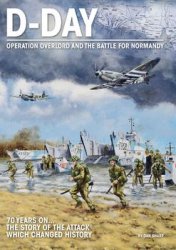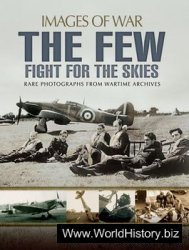Small private charter operation is registered as a U. K. airline on November 25, 1946 for the express purpose of providing a specialized British air link to Australia and South Africa in support of the mining industries of those countries. A total of ?500,000 capitalization is provided by the industry, including Imperial Smelting Corporation and the Zinc Corporation, and administrative and management support is given by British Aviation Services (Britavia), under supervision of Managing Director Griffith J. Powell.
The carrier’s name is taken from the Zinc Corporation’s mining town of Broken Hill (“The Silver City”), Australia. Three Avro Lancastrian 3s, purchased from their manufacturer in October and christened City of New York, City of Canberra, and City of London, are now placed in service between Britain’s Langley Aerodrome and South Africa and Australia. Two Douglas DC-3s are added in November and December.
Early in 1947, the Langley base is closed and company operations in the U. K. are shifted over to Blackbushe Airport, site of Britavia’s headquarters. A Lockheed Model 18 Lodestar is purchased in February and employed for fast passenger charters. Three more DC-3s are acquired in June and July, with a de Havilland DH 104 Dove I purchased in the former month and a Lancastrian sold in the latter.
In October, another Dove I is bought and a Bristol 170 Mk. IIA Freighter is leased from its builder. In November, the Freighter and a DC-3 are transferred to Karachi to participate in the airlift of Hindu refugees to India from the newly created Pakistan. The Freighter transports more people than any other single aircraft involved in this Operation India.
Silver City Airways undertakes a variety of ad hoc charters during 1948, A holiday route Blackbushe-Jersey, charter flights within Rhodesia, and the transport of racehorses to and from Continental destinations serve as examples. During the year, another Dove I is accepted and five more Bristol Freighters arrive to replace the first, now returned; three DC-3s are sold. With a Bristol 170 Freighter, the world’s first vehicle ferry service is flown under a British European Airways Corporation (BEA) associate agreement, Lympne-Le Touquet on July 14; two cars are transported. Following the lift of 174 autos and their occupants, the service is suspended for the winter on October 7. In mid-October, four Bristols are committed to the Berlin Airlift.
Permission to resume the cross-Channel vehicle ferry service is received in January 1949. The Bristols are withdrawn from the Berlin Airlift on February 5, having made the delivery of 896.4 tons of supplies in 213 sorties since October. Produce and livestock charters to and from France and Ireland are now undertaken and on April 15, the Le Touquet vehicle ferry service is resumed.
Return flights to Lympne carry both cars and cargo. Over 10,000 passengers and 2,482 vehicles are flown on the year. The subsidiary, Air Malta., Ltd., is formed to operate two de Havilland DH-104 Doves on charters from the Mediterranean island to Cairo, Tunis, and Catana. The fleet is increased by the addition of a DC-3, a Percival Proctor 3, and three Bristol Freighters, the latter allowing the leased units to return to the manufacturer.
Vehicle ferry and ad hoc charter work occupies the carrier throughout 1950. On March 21, a Bristol 170 Mk. 21 is destroyed in a crash at Cow-bridge; a new Mk. 21 joins the fleet at month’s end. The DC-3 City of Hollywood is sold in June.
Between the spring and October, when services are suspended, a total of 3,950 cars and 900 motorcycles are carried Lympne-Le Touquet. Berlin, Alexandria, Antwerp, Malta, Goteborg, and other cities are visited by chartered Silver City aircraft. Air Malta, Ltd. is purchased by Malta Airways, Ltd. on December 15 and on December 17, a DC-4 flies Winston Churchill to Marrakesh, remaining on call to the VIP.
Two more Bristol 170 Mk. 21s are purchased in March and April 1951 and are added to the cross-Channel service when it resumes during the latter month. The most successful season yet sees the Freighters transporting 30,000 passengers and 13,000 vehicles between Lympne and Le Touquet.
Many ad hoc charters are again flown, ranging from pest control helicopter flights in Khartoum to a November contract for the transport of 1,800 cows over the air ferry route. The Percival Proctor 3, all three Dove Is, and a DC-4 are sold. During December alone, the Bristols bring over 18 tons of French cheese into Britain every week.
Airline employment in 1952 is 167. On January 10, a new Southampton (Eastleigh) to Cherbourg (Maurpertus) scheduled vehicle ferry service is inaugurated; while awaiting the spring rush, additional funds are raised by flying in French cheese. On April 7, the carrier begins a two-week charter flying office furniture from England to Paris for headquarters of the new North Atlantic Treaty Organization. On April 14, a third vehicle route is inaugurated from Southend to Ostend and in June the company hauls 10 British racing cars to Le Mans for the 24-hour endurance race.
The 10,000th cross-Channel vehicle flight is completed on July 1 and the equestrian teams of Canada, France, and Egypt are transferred to Helsinki for the Olympic Games. Ad hoc charters are also flown to Algeria, Germany, Turkey, Holland, Austria, Finland, Italy, Belgium, and other European and North African destinations. At the end of the season, the Ostend route is dropped from the trans-Channel route network; during the summer, 11,000 vehicles and 17,000 travelers have been carried.
Tripoli travel agency owner Sayyed Mohammed Senussi Giaber joins with Silver City to form Libyan Airways. The U. K. operator provides two wet-leased Bristol 170 Freighters that are employed to operate non-scheduled all-cargo services to Benghazi and Kufra.
For the winter, five of the six Bristol Freighters are dispatched to Berlin for contract flights out of the former German capital. Fleet changes during the year include the deletion of an Airspeed AS.65 Consul and the addition of three Bristol 171 Mk. 21s.
En route to Hamburg from Berlin on January 19, 1953, a Bristol 170 Mk. 21 with two crew makes a forced landing in fog on the railway lines outside Tempelhof Airport; although the aircraft must be written off, there are no fatalities.
Also in January, weekly scheduled roundtrip Bristol services are initiated by Libyan Airways between Tripoli and Benghazi.
On March 31, the company receives the first two of 14 specially ordered Bristol 170 Mk 32 Freighters; the aircraft are employed to inaugurate London (LGW)-Le Touquet ferry flights on April 15. In late June, a Breguet 761 Provence is leased for three months from its French manufacturer; it is sent to Berlin to fly cargo flights to Hamburg.
On September 22, ground is broken for a new airport to replace that at Lympne, which has outgrown its usefulness. When the summer season finishes at the end of October, Silver City finds that it has quadrupled its cross-Channel carriage over 1952: 175,000 vehicles and 93,000 passengers have been flown. With an improvement in relations between the East and the West, Berlin to Hamburg flights cease in December. Six Bristol 170 Mk.32s and two DC-3s join the fleet during the year and no aircraft are removed.
Weekly skiing vehicle flights are inaugurated between Blackbushe and Zurich on January 2, 1954. In June and early July, three more Bristol 170 Mk. 32s are delivered. Construction of the carrier’s own airport is completed at Lydd; christened Ferryflight, it is opened on July 13. Within a month, almost all company operations are transferred to this site.
Lympne-Calais ferry service is flown prior to the closure of Lympne Airport on October 31 and a Blackbushe-Zurich frequency is offered during the summer. During the national dock strike of October, company Bristols fly 500 tons of goods over their cross-Channel route in 70 roundtrips.
At month’s end, it is reported that the scheduled vehicle services into France and Belgium have accommodated 110,687 passengers and 42,507 vehicles from both Lympne and Ferryflight.
Following a March 24, 1955 proving flight, regularly scheduled Stran-raer-Belfast Bristol 170 car ferry flights start on April 6; the same day, a Southampton-Deauville summer service is launched. Late in the month, two DC-3s are added. Liverpool-Belfast flights commence on June 17. Daily Ferryfield-Calais Roadair service is inaugurated on November 1.
Atotal of 166,000 passengers, 5,000 tons of freight, and 57,000 vehicles are transported during the year.
Daily Southampton-Guernsey vehicle, cargo, and passenger services begin on February 27, 1956. In an effort to rationalize the air transport situation in northern England, plans are laid by the British Aviation Services (Britavia) Group early in the year for the creation of a regional airline division. The first step is the purchase of Manx Airlines, Ltd. (1) in March, allowing the new partner to retain its own name.
On May 11, low fare Silver Arrow coach-air service is begun over routes London and Lydd to Le Touquet, Paris, Ostend and Brussels; only the Lydd to Le Touquet and Ostend segments are flown, the remaining portions of the journey being traversed by bus. During June and July, five more Bristol 170 Mk. 32s arrive. Daily Southampton-Jersey vehicle service starts July 1. Twice-daily Newcastle-Belfast-Isle of Man vehicle flights are inaugurated on August 3. A chartered HP.81 Hermes 4A with 7 crew and 65 passengers is destroyed by a bad landing at Karachi on August 5; there are no fatalities.
In early November, a Handley Pages HP-81 Hermes 4 is leased from Air Safaris, Ltd. With 6 crew and 74 passengers, it is lost while on final approach to Blackbushe Airport on November 5 (seven dead).
Two DC-3s arrive in Austria on November 16 to begin participation in the airlift of Hungarian refugees to England, becoming the first to arrive from any British independent. Britavia purchases the Lancaster Aircraft Corporation, Ltd. on December 12, allowing it to briefly retain its own name and obtaining a de Havilland DH 86, two DC-3s, and two DH-89As in the bargain. The Hungarian airlift ends on December 14, with Silver City having transported 800 refugees to the U. K. in 26 roundtrips.
During the year, almost 200,000 passengers are transported along with over 60,000 vehicles.
In February 1957, two DH-114s, later christened City of Bradford and City of Belfast, are bought from Braathens SAFE, A. S. Dragon Airways, Ltd. is purchased from Hunting-Clan Air Transport, Ltd. on March 22.
It is announced that effective in October, Dragon will be merged with Manx Airlines, Ltd. (1) and Lancashire Aircraft Corporation, Ltd. to form Blackpool-based Silver City Airways (Northern Division), Ltd.
A small charter operator, Air Kruise, Ltd., is also acquired and is combined with the Ferryfield operation to create Silver City Airways (Southern Division), Ltd.
Following delivery of the second Heron in April, the last Dragon Rapide is sold in May.
As a result of continuing demand, fares for the vehicle ferry service are lowered. The company logs its 100,000th cross-Channel vehicle flight in July. At season’s end, the Belfast-Stranraer and Southamp-ton-Jersey and Guernsey routes are suspended.
A Bristol 170 Mk. 21 crashes at Winter Hill, Bolton, on February 27, 1958 (35 dead), it is replaced by 3 DC-3s, 2 of which are leased for 6 months from Cyprus Airways, Ltd. The DH-86 acquired with Lancaster Aircraft Corporation in 1956 is sold in April. Another Douglas transport is added in April followed by three more in July and August. Meanwhile on May 23 a new seasonal route is opened from Blackpool to Ostend followed, by month’s end, by the addition of DC-3 frequencies from Newcastle to Hamburg and Brussels via Leeds, Dusseldorf, Amsterdam, Blackpool, and Isle of Man.
Twice-weekly Heron and Wayfarer flights are initiated on June 1 from Edinburgh to Isle of Man. On September 23, twice-weekly DC-3/DH-114 charters are inaugurated Manchester-Wick on behalf of the Nuclear Power Group.
Passenger and vehicles now average 200,000 and 70,000 enplane-ments per year, respectively.
The company’s only Dove IB is transferred to Morton Air Services, Ltd. in February 1959, the same month a Bristol 170 Mk. 21 is destroyed in a crash at Le Touquet. Bournemouth-Cherbourg vehicle ferry flights commence on March 11. Blackpool-Dublin scheduled service is inaugurated, in association with Aer Lingus Irish Airlines, Ltd., on May 15, followed by flights to Jersey, Ostend, Belfast, and the Isle of Man. May 29 marks transport of the 250,000th car across the English Channel.
On June 2, weekly DC-3 inclusive tours are launched from Manchester to Stavanger, followed by the introduction of similar offerings to Glasgow, Luxembourg, and Rotterdam. Later in the month and through December, four ex-British Overseas Airways Corporation (BOAC)
HP-81 Hermes 4s are obtained and based at Manston Airport, Kent; their names become: City of Chester, City of Coventry, City of Truro, and City of Gloucester.
On June 15, the flight stage of the Le Touquet Silver Arrow service begins to originate with HP-81s flying from Manston. During the third quarter, the company briefly entertains the possibility of purchasing 15 Rolls Royce Merlin 527 Dart-powered freighters from the French manufacturer Hurel-Dubois; too expensive to build for limited markets, the proposed aircraft never makes it off the drawing board. The DH-114s City of Bradford and City of Belfast are sold in November and December and replaced by two more DC-3s.
By 1960 the fleet includes 4 HP-81 Hermes 4s, 1 DH-104, 6 Bristol 170 Mk. 31s, 14 Bristol 170 Mk. 32s, and 11 DC-3s. During the year, the Hermes 4 leased from Air Safaris, Ltd. in 1946 is returned and no other fleet changes are made. Given the heavy demands upon Ferryfield, the Ferryfield end of the Ostend route is transferred to the airport at Manston, along with a variety of ad hoc and inclusive-tour charters.
During the summer, HP-81 Glasgow-Reykjavik scheduled, but replacement, services are flown for Loftleidir H. F./Icelandic Airlines. Permission is now received to open vehicle ferry services to Cormeilles, Auxerre, and Cologne.
In August, night freight charters are offered Manchester-Belfast. As the result of a government contract, HP-81s commence the flying of British soldiers from the U. K. to Germany on October 3. This one-year experimental trooping service will see the roundtrip transport of 3,500 men per month.
Vehicle ferry, inclusive-tour, and ad hoc charter flights continue in 1961 on schedules little changed from the previous year. The experimental German trooping contract is successful, but, when put out to bid, the business is won by British United Airways, Ltd.
In October, a Bristol 170 Mk. 21 is withdrawn. The Bristol 170 Mk. 31M City of Worcester with three crew and seven passengers crashes while on final approach to Les Provosts, Guernsey, on November 1 (two dead). This is the first vehicle ferry fatal crash in 250,397 Channel crossings since 1948.
British United Airways, Ltd. joins the Britavia Group on November 3; the latter is now transformed into the holding company Air Holdings, Ltd. In December, Silver City officials make plans to open a scheduled route network from Newcastle and Leeds the next year and to fly it, three Vickers Viscount 708s are leased from Maitland Drewery Aviation, Ltd.
Air Holdings’ two most important subsidiaries, Silver City Airways, Ltd. and British United Airways, Ltd., are merged on January 23, 1962, although the former is allowed to retain its name for the summer marketing season. The Bristol 170 Mk. 21 City of Sheffield is destroyed in a crash at Ronaldsway, Isle of Man, on June 30.
During the summer, Silver City transports a total of 105,000 passengers over its routes to the Isle of Man, including 3,243 on July 28, a one-day company record. On November 1, British United (Channel Islands) Airways, Ltd. is formed as a single large car ferry operator, becoming British United Air Ferries, Ltd. on January 1, 1963.
SILVER KRIS SERVICES: United States (1982-1984). William “Bill” Kingson establishes Silver Kris at Bradley Field, Hartford, Connecticut, in 1982 to undertake both scheduled all-cargo commuter flights, as well as charter and contract services. Employing a fleet of 4 Britten-Norman BN-2 Islanders, 1 Piper PA-31-350 Navajo Chieftain, and 1 Cessna 404 Titan, Kingson’s company weekday scheduled routes extend to Philadelphia and to Republic Airport on Long Island.
Operations continue apace in 1983, but cease in 1984.
SILVER STATE AIRLINES: United States (1972-1982). Silver State is formed at Las Vegas in December 1972 to operate Beech 18 charter flights to the Grand Canyon. These on-demand services continue apace for the remainder of the decade.
In March 1980, Robert A. Jones and Perry W. Russell acquire the carrier and begin to provide thrice-daily scheduled flights to the Grand Canyon. Employing a fleet of 2 Embraer EMB-110 Bandeirantes, 4 Beech 18s, and 1 Piper PA-31-350 Navajo Chieftain, the carrier boards 24,800 passengers.
Sales offices emphasizing air tours are established in Tokyo, Frankfurt, and Zurich and late in 1981, two Beech 18s are dedicated to the opening of a southern division and a second route between San Juan and St. Thomas. Bookings for the year rise to 37,314. Unable to weather the recession, the company shuts down in 1982.




 World History
World History









